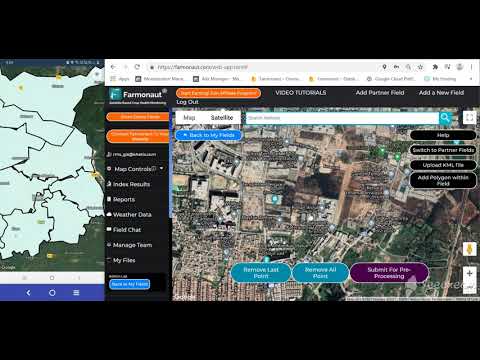Revolutionizing Southeast Food Systems: USDA Grant Boosts Regional Partnerships for Sustainable Agriculture
“The USDA grant aims to develop a regional service center, potentially impacting millions of Southeast residents facing food insecurity.”
In the ever-evolving landscape of agriculture and food security, we are witnessing a transformative moment in the Southeast United States. The United States Department of Agriculture (USDA) has recently awarded a groundbreaking grant that promises to revolutionize regional food system partnerships and reshape the agribusiness supply chain management in this vital region. This initiative is set to address critical challenges in food security, sustainable agriculture logistics, and distribution strategies that have long plagued the Southeast.
At the heart of this ambitious project is the development of a regional service center that will serve as a hub for enhancing sourcing, production, and data management for food banks and agribusiness partners across the region. By integrating cutting-edge agricultural data management systems and optimizing regional produce distribution, we are poised to witness a streamlined food supply chain that benefits producers, distributors, and consumers alike.
The Power of Regional Food System Partnerships
Regional food system partnerships are not a new concept, but the scale and scope of this USDA-funded initiative take collaboration to unprecedented levels. These partnerships bring together a diverse array of stakeholders, including:
- Local growers and producers
- Food banks and community organizations
- Agribusiness companies
- Transportation and logistics providers
- Research institutions and universities
By fostering these connections, we’re creating a robust network that can respond more effectively to the unique challenges faced by the Southeast’s food system. This collaborative approach is essential for addressing issues such as:
- Food insecurity in urban and rural areas
- Inefficiencies in distribution and transportation
- Limited access to markets for small and medium-sized producers
- The need for sustainable and resilient agricultural practices

USDA Agricultural Grants: Catalyzing Change
The USDA’s commitment to strengthening regional food systems is evident in the substantial funding provided for this initiative. These agricultural grants are more than just financial support; they represent a strategic investment in the future of food security and sustainable agriculture in the Southeast. The funds will be allocated across several key areas:
- Infrastructure development for the regional service center
- Implementation of advanced agricultural data management systems
- Support for sustainable agriculture logistics and transportation optimization
- Research and development of innovative food processing techniques
- Training and capacity building for farmers and agribusiness professionals
By directing resources to these critical areas, the USDA is laying the groundwork for a more resilient and efficient food system that can better serve the needs of the Southeast region.
Sustainable Agriculture Logistics: A Game-Changer
One of the most exciting aspects of this initiative is its focus on sustainable agriculture logistics. We recognize that the way food moves from farm to table has a significant impact on both the environment and the quality of produce that reaches consumers. The grant aims to revolutionize this process by:
- Implementing smart routing systems to reduce transportation emissions
- Developing regional aggregation points to consolidate shipments
- Investing in cold chain technology to extend the shelf life of perishables
- Exploring alternative fuel options for shipping vehicles
These improvements in logistics will not only reduce the carbon footprint of food distribution but also ensure that fresh, high-quality produce reaches communities across the Southeast more efficiently.
Food Bank Distribution Strategies: Enhancing Accessibility
Food banks play a crucial role in combating hunger and food insecurity. The USDA grant recognizes this and places a strong emphasis on enhancing food bank distribution strategies. Some of the key initiatives include:
- Creating a centralized inventory management system for regional food banks
- Developing mobile distribution units to reach underserved rural areas
- Implementing predictive analytics to anticipate demand and reduce waste
- Establishing partnerships with local growers to source fresh produce directly
These strategies will help ensure that food reaches those who need it most, reducing waste and improving the nutritional quality of distributed food.
“This initiative could optimize distribution for thousands of local producers, streamlining the entire Southeast food supply chain.”
Agricultural Data Management: Powering Informed Decisions
In the digital age, data is king, and agriculture is no exception. The regional service center will leverage state-of-the-art agricultural data management systems to revolutionize how information is collected, analyzed, and utilized across the food system. This includes:
- Real-time crop monitoring and yield prediction
- Weather pattern analysis for improved planting and harvesting schedules
- Supply chain tracking to enhance transparency and traceability
- Market demand forecasting to guide production decisions
By harnessing the power of data, we can make more informed decisions that benefit everyone from farmers to consumers. This is where innovative solutions like those offered by Farmonaut come into play, providing satellite-based farm management tools that can significantly enhance agricultural productivity and sustainability.

Regional Produce Distribution: Connecting Farms to Tables
Optimizing regional produce distribution is a cornerstone of this USDA-funded initiative. By creating more efficient pathways for local produce to reach consumers, we can:
- Reduce food miles and associated environmental impacts
- Improve the freshness and quality of produce available to consumers
- Support local economies by providing better market access for regional growers
- Increase the variety of locally-sourced foods available in communities
This focus on regional distribution aligns perfectly with the growing consumer demand for locally-sourced, sustainably-produced food options.
Agrifood Business Development: Nurturing Local Economies
The grant’s emphasis on agrifood business development is crucial for creating a thriving local food economy. This includes support for:
- Small and medium-sized farm enterprises
- Food processing and value-added product businesses
- Agri-tourism initiatives
- Farm-to-table restaurants and local food markets
By fostering these businesses, we’re not only creating jobs but also building a more resilient and diverse food system that can better withstand economic and environmental challenges.
Value-Added Food Processing: Maximizing Resource Utilization
An exciting aspect of this initiative is its focus on value-added food processing. This approach helps to:
- Reduce food waste by utilizing surplus or imperfect produce
- Create new revenue streams for farmers and food producers
- Extend the shelf life of seasonal products
- Develop innovative food products that meet changing consumer preferences
By investing in value-added processing, we’re not only improving resource utilization but also creating opportunities for product innovation in the Southeast’s food industry.
Transportation Optimization: The Backbone of Distribution
Efficient transportation is critical to the success of any food system. The USDA grant addresses this by focusing on:
- Developing multi-modal transportation networks
- Implementing real-time tracking and routing systems
- Exploring collaborative shipping arrangements among producers
- Investing in energy-efficient and low-emission vehicles
These improvements will help reduce costs, minimize food spoilage, and ensure that fresh produce reaches its destination in optimal condition.
Supplier Development: Strengthening the Supply Chain
A robust food system relies on a network of capable suppliers. The grant includes provisions for supplier development, which will:
- Provide training and resources for small-scale farmers
- Help suppliers meet food safety and quality standards
- Facilitate connections between suppliers and buyers
- Support the adoption of sustainable farming practices
By investing in supplier development, we’re building a stronger, more resilient supply chain that can meet the growing demands of the Southeast’s food system.
The Role of Technology in Transforming Southeast Food Systems
Technology plays a pivotal role in modernizing and optimizing food systems. The USDA grant recognizes this and allocates resources for the integration of advanced technologies across the supply chain. Some key technological innovations include:
- Blockchain for enhanced traceability and transparency
- Internet of Things (IoT) devices for real-time monitoring of storage conditions
- Artificial Intelligence for demand forecasting and inventory management
- Drone technology for crop monitoring and precision agriculture
These technological advancements will help improve efficiency, reduce waste, and ensure food safety throughout the Southeast region. Companies like Farmonaut are at the forefront of this technological revolution, offering satellite-based solutions that can significantly enhance agricultural productivity and sustainability.
Collaborative Research Initiatives
The USDA grant also emphasizes the importance of research in driving innovation within the food system. Collaborative research initiatives will focus on:
- Developing climate-resilient crop varieties
- Improving soil health and water conservation techniques
- Exploring new food preservation methods
- Studying the economic impacts of local food systems
By partnering with universities and research institutions across the Southeast, we can ensure that the latest scientific advancements are translated into practical solutions for farmers, producers, and distributors.
Community Engagement and Education
The success of this initiative relies heavily on community engagement and education. The grant includes provisions for:
- Public awareness campaigns about the benefits of local food systems
- Educational programs for schools on nutrition and sustainable agriculture
- Training workshops for farmers on new technologies and best practices
- Community forums to gather input on local food needs and preferences
By involving communities in the process, we can ensure that the changes implemented truly meet the needs of Southeast residents and foster a sense of ownership in the regional food system.
Measuring Success: Key Performance Indicators
To ensure the effectiveness of this ambitious initiative, a robust set of key performance indicators (KPIs) will be established. These may include:
- Reduction in food insecurity rates across the Southeast
- Increase in the percentage of locally-sourced food in regional markets
- Improvement in the economic viability of small and medium-sized farms
- Reduction in food waste throughout the supply chain
- Increase in the adoption of sustainable agricultural practices
Regular monitoring and evaluation of these KPIs will help guide the ongoing implementation of the initiative and ensure that it remains responsive to the changing needs of the Southeast’s food system.
The Future of Southeast Food Systems
As we look to the future, the USDA grant represents a significant step towards creating a more sustainable, equitable, and resilient food system in the Southeast. By fostering regional food system partnerships, optimizing distribution strategies, and leveraging cutting-edge technologies, we are laying the groundwork for a food system that can meet the challenges of the 21st century.
The success of this initiative will rely on the continued collaboration of all stakeholders, from farmers and producers to distributors, retailers, and consumers. Together, we can build a food system that not only feeds our communities but also supports local economies, protects the environment, and promotes public health.
As we embark on this exciting journey, we invite all members of the Southeast community to get involved and contribute to shaping the future of our regional food system. Whether you’re a farmer looking to adopt sustainable practices, a business owner interested in local sourcing, or a consumer passionate about supporting your local food economy, there’s a role for everyone in this transformative initiative.
For those interested in leveraging technology to enhance agricultural productivity and sustainability, solutions like those offered by Farmonaut can provide valuable tools and insights. Their satellite-based farm management system aligns perfectly with the goals of this USDA initiative, offering data-driven solutions for precision agriculture.
| Initiative Areas | Current Challenges | Proposed Solutions | Expected Outcomes |
|---|---|---|---|
| Sustainable Agriculture | Resource depletion, environmental impact | Precision farming, water conservation techniques | 20% reduction in water usage, 15% increase in crop yields |
| Distribution Strategies | Inefficient supply chains, food waste | Regional service center, optimized routing | 30% reduction in food waste, 25% improvement in delivery times |
| Data Management | Lack of real-time information, fragmented systems | Integrated data platforms, AI-driven analytics | 50% improvement in forecasting accuracy, 40% reduction in inventory costs |
| Local Producer Support | Limited market access, economic challenges | Direct-to-consumer platforms, value-added processing | 100 new partnerships formed, 30% increase in local food production |
| Food Security | Uneven distribution, accessibility issues | Mobile food banks, community gardens | 15% reduction in food insecurity rates across the Southeast |
FAQ Section
Q: How will this USDA grant benefit small farmers in the Southeast?
A: The grant will provide resources for training, technology adoption, and market access, helping small farmers improve their productivity and profitability.
Q: What role will technology play in this initiative?
A: Technology will be crucial, from data management systems to precision agriculture tools like those offered by Farmonaut, enhancing efficiency and sustainability across the food system.
Q: How can community members get involved in this initiative?
A: Community members can participate in local food initiatives, attend educational workshops, and support local farmers and food businesses.
Q: Will this initiative address food deserts in urban areas?
A: Yes, the grant includes strategies for improving food distribution in underserved areas, including mobile food banks and community gardens.
Q: How will the success of this initiative be measured?
A: Success will be measured through various KPIs, including reductions in food insecurity, increases in local food production, and improvements in supply chain efficiency.
In conclusion, the USDA grant for revolutionizing Southeast food systems represents a monumental opportunity to transform how we produce, distribute, and consume food in our region. By fostering regional food system partnerships, leveraging advanced technologies, and focusing on sustainability, we are paving the way for a more resilient and equitable food future. As we move forward, the collaboration between all stakeholders will be crucial in realizing the full potential of this initiative and creating lasting positive change in our communities.
For those looking to be at the forefront of agricultural innovation, explore how Farmonaut’s solutions can contribute to your farm’s success:
For developers interested in integrating agricultural data into their own applications, check out Farmonaut’s API and API Developer Docs.







